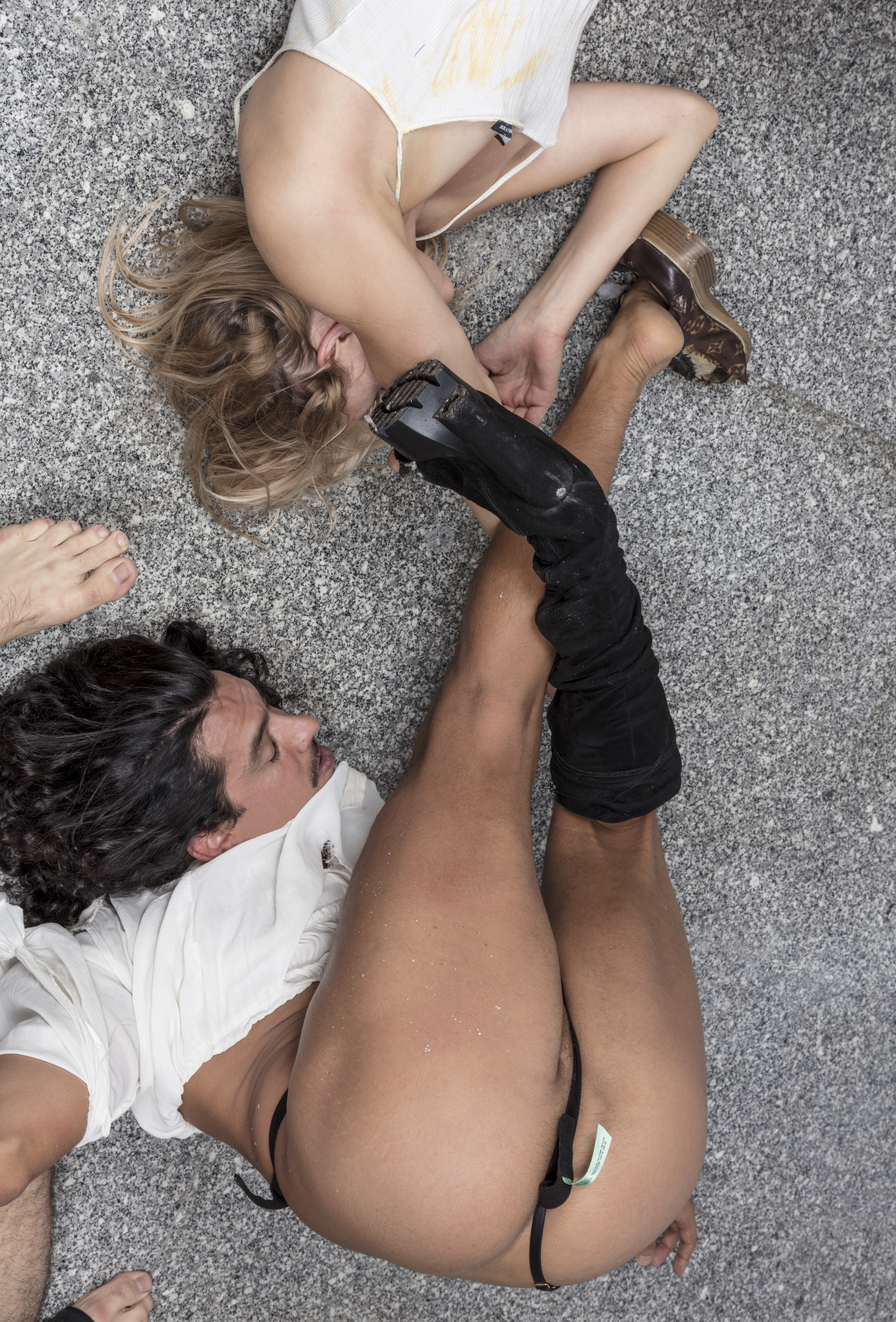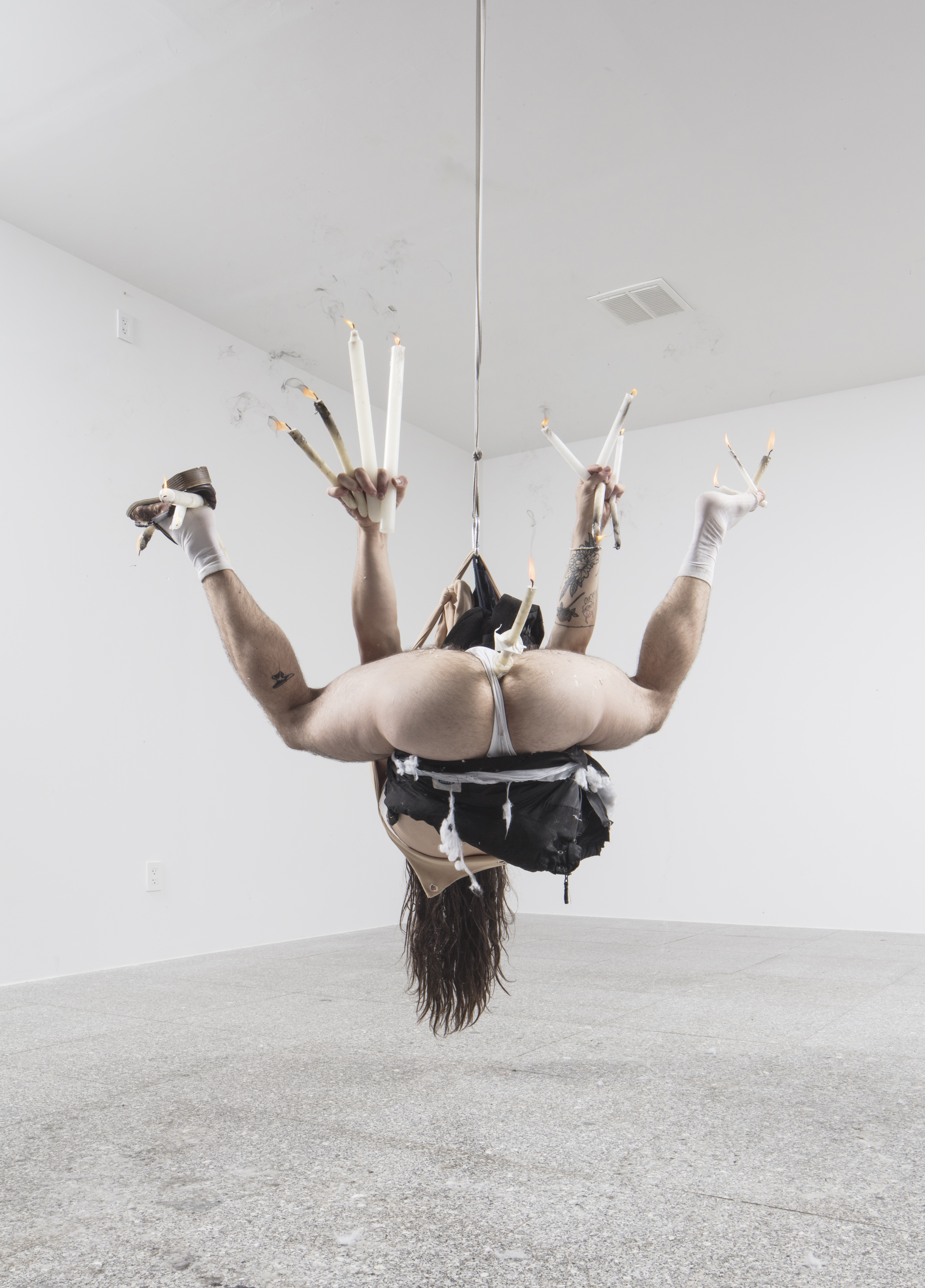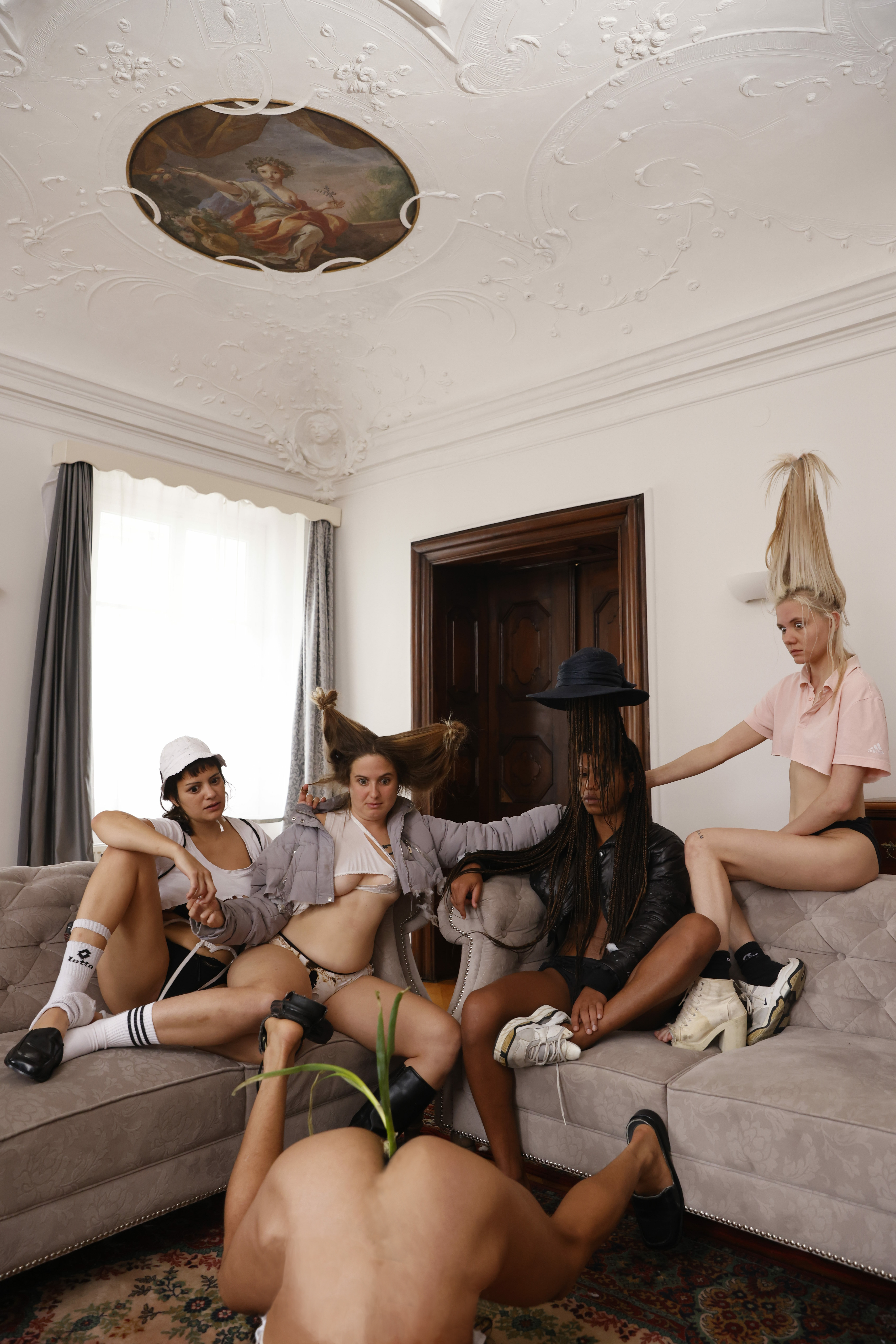

YBDG
Such words as «mass», «group», «collective», «gathering», «tactile» and all their equivalents have altered their meanings since the beginning of the great and damned 2020. How do you operate when all of the mentioned above shapes the essence of your existence as an artist?
It’s hard to trace the exact moment when Young Dancing Boy Group has emerged, but this anonymity and uncertainty only adds to their mission and charm: the dance troupe is famous for its uncanny performances and visuals. It strikes you when you realise why the dancers are so thrilling to look at: they bring you both mental and physical liberation, a unique chance to watch and feel something you have probably always wanted to do or at least fancied such an idea. Using mixed media tools which range from their own bodies to mud, YBDG is one for the books — they’re redefining the meaning of art, performance and body practice right here and right now.
It’s weird to interview a dancing collective at such challenging times. Your practices are strongly connected to intimacy — both physical and, I would say, energetic. How has the meaning of intimacy changed for you since the beginning of the pandemic and how has it affected your work?
Obviously, we perform much less now. Young Boy Dancing Group focuses on intimacy within a group. We see it as an urgent human need that is separated from sexual connotation. A non-sexual intimacy, so to say. But since the COVID-19 outbreak the feeling of intimacy as we knew it has been gone: we used to sit on people and literally shake them. It’s hard to imagine doing this now. Our recent shows in Slovenia and Croatia were different and weird in a way, but intimacy goes beyond physical touch.
Despite everything, we are bettering our work behind the scenes. Doing paintings, videos and photography — continuing in the given situation. We started publishing videos on TikTok, which seems to be lacking non-stereotypical content.
Why is it important for your work to be multidisciplinary?
We have certain topics we want to address, and use the medium that is the most convenient and practical for us. Our paintings, photography and videos allow us to work more independently. Venues who want performances demand a larger amount of time and resources. To adapt to the present circumstances we automatically work with a multidisciplinary approach.
Some of you have degrees in dancing. I assume the approach to the movement in the universities is more conservative. How has your education affected your work in Young Boy Dancing Group?
Studying at the Martha Graham Studio in NYC was very restrictive and after that we felt the need to liberate ourselves from the boundaries of these traditional dance techniques. Although there was a process of unlearning after we graduated, the technical background gave us a certain view on the body and how to take care of it.
I loved how in one of the interviews your troupe was referred to as «amoeba», as your cast truly exists like an interchanging organism. Where do the dancers come from? Can you tell about the weirdest requests or dancers you’ve encountered?
The dancers come from the cities we are having shows in — so basically they are locals. One of the weirdest things happened to us during out mud show in Paris — some people from the audience suddenly started dancing with us. This request was not vocal, but the moment was special. Dirt was everywhere — it took about 3 hours of non-stop cleaning after the performance.
What we would call weird is the review from one guy who tried to ban us on every single social media. He talked about censorship and he thought we’re not radical enough. He had some issues with us, but at the same time he liked us, but not really?.. That was the weirdest thing. He literally said that if we want to be radical, we should listen to Green Day and chant in an olympic pool. And we actually considered it (laugh).
In earlier interviews you’ve mentioned that you basically spend 24 hours a day with each other. I want to talk to you about isolation and loneliness. You perform as a group, but each of you is an individual dancer. How does your individual dancing techniques and feelings differ from the group ones?
Some parts of our group practices might end up in some of our individual works. We don’t differentiate that much. Even though aesthetically it can be different, the material itself is shifting and swapping.
Is there such thing as home for you?
Home is where our health insurances are (laugh). If you have one! We can call ourselves nomadic in a way, and our community is an international network. So there are many homes: Berlin, Amsterdam, Zurich, Athens… Nomadic lifestyle is romantic, but sometimes having a place where you can just drop your luggage for a long time period feels good.
Is the dancing part 100% unscripted or do you have at least one rehearsal before the performance or talk the idea through to each other? What is the process before an actual performance?
The performance are scripted improvisations. We set up more or less a new structure for each venue and we have two or three rehearsals prior to the show. We have a collection of scenes that we rearrange or get rid of, and during this process new ones appear. During the show we all follow a structure which is often being guided by music.
How your family and friends or most interestingly new people you encounter react when they see what you do?
Surprised, but never shocked. People mostly see us on Instagram and it’s seems to be a very sexual and shocking performance, everyone thinks we are just being sexual beasts when we perform, and that our ultimate goal is to shock, but the performance is actually a dystopian sadness landscape which has nothing to do with sex, but rather with collective heights, being vulnerable and autistic. All the “shocking” imagery actually consists of very poetic choreographies. Our audience is often touched.
You named one of your dancing tours as «Anxiety Tour». Why?
Because anxiety and depression is such a close topic for some of us. It’s a sickness so many people around us suffer from. Instead of a happy title we rather felt like going to a serious topic. Our performances are often a personal emotional opening, so the title felt very accurate.
Do you enjoy pain?
We like to go through struggle and vulnerability during our shows and by doing it in public we challenge our audience.
Were there any injuries during or after your performances and have you ever thought something terrible can happen to some of you during the piece?
Yes, accidents can happen everywhere. We illustrate the decay of society with unstable choreographies: this is something we like to play with. During the rehearsals we look at those fragile moments and how to avoid accidents or how to step on someone. We follow a strict security protocol.
Holes. Do you remember the exact moment of this put-an-object-in-your-butthole idea and who exactly came up with this? How do others dancers react to it?
We all had a history of putting things inside our holes way before we’ve met. It was an obvious idea. But the very first time we practiced it together was at Ann-Leonie Auers place in Paris. We had the idea and the lasers. All of us were shy to do it first in front of the others, but we’re very thankful to Bryan Cambel — they broke the ice. It was liberating.
Let’s talk more about collaboration. Whose butthole would you love to have in your show?
Michael Clark’s and CCULDESAC’s.
Your work strongly intersects with fashion. Where do you take the clothes you perform in from?
From the streets, mainly from Athens. We re-use and re-appropriate rather than feed the chain of consumer goods.
Is there a dream fashion designer you would love to collaborate with?
Not a fashion designer, but — Michael Clark.
The same goes with music. Who is responsible for the audio part of the show? A dream music collaboration?
We worked together with musicians such as Oxhy, Battle-ax, Iku, Dan Bodan and Abssys — they all made special edits for us. Although now we’re producing our own music, we would love to work with Caterina Barbieri, Ssaliva and Ange Halliwell.
How crucial is the space you’re performing in for you? Is there a dream place you would like to dance in?
We would like to have our own venue, where we can do every week shows.
What’s your favourite part of the human body?
The gaze is obviously the hottest part. You can separate yourself from the emotions, and watch the time tick in slow-motion.
What is the dream object / subject you haven’t worked on yet?
Direct political activism.
If your performances could be referred to as a smell, what would it be?
The smell of freedom. The world ruled by dance.
Interviewer: Ruslan Nasir
All images are provided by Young Boy Dancing Group specially for CCULDESACC





